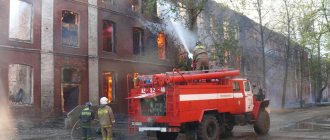Not all business representatives have the opportunity to immediately buy or rent an ideal office or other commercial space, fully adapted to perform their tasks.
Much more often you have to choose the most accessible premises and engage in their improvement. In many cases, there is a need for redevelopment, and such work must be carried out in accordance with all the rules and the changes must be coordinated with government agencies.
In today's article, we will talk about when you need to obtain permits and how the procedure for approving redevelopment in residential and non-residential premises occurs.
Common Change Options
In fact, there are not so many options for redevelopment of non-residential premises that entrepreneurs use. Most often there is a need to expand the usable area, or to combine premises, to change their purpose. For example, for optimization purposes, it may be necessary to move the sanitary area to another location, change the location of doorways, install air conditioners, shelving, or any bulky equipment or equipment.
It is worth remembering that if there is no official permission for redevelopment, changing the configuration of the premises is considered illegal, and this is fraught with problems with the law.
Actually, you can only change things without permission that do not change the design of the interior design, for example, change the color of the walls, update the decoration and built-in furniture, replace plumbing and other utilities.
Redevelopment, refurbishment or reconstruction
Redevelopment, which refers to large-scale structural changes, should not be confused with reconstruction, that is, with minor amendments to the existing layout of the premises. In the same way, redevelopment differs from the reconstruction of a building, when major work is carried out that involves significant changes affecting the load-bearing walls (which with other types of modernization must remain intact)
.
All these are different concepts from the point of view of legislation, however, there are no distinctions related to changes in the configuration of residential and non-residential premises.
Legal requirements, responsibility
There are certain rules and regulations, compliance with which during the redevelopment process is mandatory, these are:
• regulatory requirements;
• building regulations;
• sanitary and hygienic standards.
Thus, planned changes require confirmation from several authorities at once, which means you will have to take care of obtaining permits yourself or resort to the help of structures that provide similar services (for example, design companies)
. Legal redevelopment, as well as the involvement of qualified specialists, is a guarantee that the premises will not fall into disrepair as a result of unprofessional or thoughtless actions, and any risks will be minimized.
If unpleasant surprises occur
(destruction or weakening of the building's load-bearing structures), the organization that issued the permit will be responsible , unless, of course, all work was carried out in strict accordance with the plan.
It is for this reason that, as practice shows, it is easier to obtain permits for small redevelopment of non-residential spaces than to obtain consent for large-scale changes.
If the non-residential premises are located in an apartment building
Often, commercial premises are arranged on the first floors of a residential building - shops, offices, beauty salons, etc. If the intended purpose of this premises is commercial, then there is no particular specificity in the case of redevelopment. You need to act according to the algorithm proposed above.
When an apartment is redesigned for such purposes, then the consent of the residents will be required. Moreover, the order depends on the form of management of such an object.
When approval is needed: what does the legislation say?
When developing the redevelopment of non-residential commercial premises, first of all, it is recommended to carefully study the Criminal Code of the Russian Federation
and in particular Article 25, which spells out basic terms, a list of necessary documents, and the distribution of responsibilities when carrying out reconstruction and redevelopment work. In particular, it contains basic changes in non-residential premises, which must be legalized. So, approvals cannot be avoided if:
• the area of the room is expanded due to the demolition or movement of walls;
• it is planned to construct new walls or permanent partitions;
• there is a need to remove or move doors and windows;
• installation of new engineering and technical equipment is planned;
• one large room is converted into several small ones;
• liquidation or, conversely, installation of stairs is required;
• it is necessary to move the sanitary premises;
• changes in the design of the ceiling and floor are expected;
• communication networks need to be connected;
• it is planned to install equipment that needs to be connected to communication networks.
In addition, it is worth turning to the Town Planning Code and studying the temporary regulations for the approval of project documentation. Often local authorities impose their own restrictions, so to clarify the full list, it is worth contacting specialists and studying local regulations. If ordinary cosmetic repairs are planned without any encroachment on the supporting structures of the building and without changes to the existing design, you can begin work without wasting time on approvals.
When radical transformations have already begun in an “illegal” way, without prior approval, the redevelopment will still have to be legalized, but through the courts. Moreover, it may well turn out that it is impossible to legitimize the changes (construction and other standards have been violated), and the owner will have to return the object to its original state.
The owner may be fined, and in some cases more serious sanctions may be applied to him (imprisonment)
if, for example, as a result of the work a collapse occurred and people were injured.
Redevelopment of non-residential premises
The main task of redevelopment of such a room is to improve the performance or functional purpose of the area. The purpose of such actions is to create the necessary conditions for doing business.
Legalization and obtaining permits is required for the following actions:
- Construction of new walls and partitions that increase the load on the supporting structure. The matter concerns primarily stone and wooden structures.
- Changing the location of the bathroom and other sanitary facilities.
- Transfer, demolition of additional elements. These include windows, stairs, balconies. This also applies to making changes to their appearance.
- Changing the size of window openings, eliminating or making new holes.
- Structural replacement of the subfloor, which leads to increased load on the foundation and load-bearing walls.
- Installation or dismantling of stairs.
- Connecting any new communications.
Some actions do not require permission:
- Cosmetic repairs: painting, wallpapering, changing flooring.
- Replacement of individual communication elements with ones of similar size and weight.
- Dismantling built-in furniture.
Important! In general, technical and quality elements can be redesigned with permission and communications can be rearranged. The main requirement for such manipulations is the absence of interference in the appearance of the building’s façade.
Qualification of changes
In order for the authorities involved in technical inventory to recognize the changes being made as redevelopment, and not a more complex reconstruction, it is important to indicate that when changing the basic parameters of the premises, the fundamental structures will not be affected. These are understood, first of all, as load-bearing walls that hold interfloor ceilings.
There is one more important condition - maintaining the external parameters of the converted non-residential premises. That is, inside you can change the configuration of the space by all available means, but outside everything should remain unchanged, by the way, external communications should also remain in their original form.
The redevelopment of non-residential premises in a commercial zone is agreed upon according to a simplified procedure, but when the upcoming modernization work is classified as reconstruction, in order to organize and implement it, you must have permission from local authorities authorized to control urban planning issues in the locality.
Simplified procedure: receiving documents and registering changes
The simplified procedure applies only to redevelopment in a non-residential building. If this is an office in a new building with an initially open plan, there will be no problems at all with coordinating the redevelopment of non-residential premises - the entire space is initially prepared in such a way that the owner or tenant can arrange it in their own way.
Both the owner of non-residential premises and the tenant, who will act by proxy, can apply for consent from the administration and design organizations. It is highly undesirable to start any work (both redevelopment and simple repairs)
without informing the owner of the premises
- he may not agree with the changes, refuse to legitimize them and return everything to its original state through the courts.
And you will have to spend money on compensation for material and moral damage. To make the redevelopment of non-residential space legitimate, you need to prepare a project (performed by a licensed design organization)
and coordinate it with the administration
(department of construction and architecture)
, and then go to the BTI with an application. Technical inventory specialists will arrive at the site at the agreed time, perform routine measurements and determine the category of work. Then, when the redevelopment has already been completed, the selection committee will compare the drawings and planning documents before the start of work and after their completion, make sure that the work performed did not go beyond the scope of the project, and issue an appropriate conclusion. This document will describe in detail all the work performed on the premises, indicating technical standards and construction regulations.
After this, the documents are submitted to Rosreestr, which will register the changes made. As a rule, Rosreestr officials who will subsequently work with this document begin reading the conclusion from the final part, which states that everything done can be classified as a redevelopment, which was carried out according to the rules and does not pose a threat to the stability and safety of the entire building.
Stages and procedure for approval
There are 2 main procedures that must be followed to carry out legal redevelopment:
- Coordination of documents for its implementation and obtaining a work permit.
- Execution according to standards.
The law requires compliance with construction standards during the work process. First of all, this is the implementation of all actions in accordance with the approved project. The second is compliance with quality, in accordance with hygiene, sanitary and fire standards.
Upon completion of all actions, the object is visited by a commission, which accepts it or not. If everything is done according to the specified requirements, then no problems arise.
Important! Based on the results of the inspection, an act must be drawn up confirming the completion of the redevelopment. It will be the documentary basis for making adjustments to technical documentation and similar data in the unified register of real estate.
Particular attention should be paid to the approval of the developed project, because this is an indispensable condition, without which work cannot begin. Even if this is done, it is considered illegal and entails civil and administrative liability. The algorithm for approving the redevelopment of a non-residential building involves submitting a package of papers to the authorities:
- State housing inspections of the locality.
- Fire supervision.
- SES.
- Bureau of Construction Expertise, it is possible to visit a private expert.
- Other supervisory authorities, whose control arises from the specifics of the activity.
You will have to visit especially many authorities if the building is an architectural monument. Do not think that such thorough checks will be limited to just reviewing documents. In most cases, the site will be visited by representatives of one or another government agency. The main task is to make sure that the redevelopment will not pose a danger to the integrity of the structure.
If the approval is successful, the go-ahead will be issued to obtain permission to carry out the work.
Below is an application for changing the layout of non-residential premises:
Redevelopment of commercial properties in residential buildings
Owners or tenants of premises in apartment buildings should reserve time and resources for the lengthy approval procedure. This process is somewhat more complicated, since first you need to transfer, for example, an apartment (or several) on the ground floor to non-residential stock.
At the start of the approval process, it is necessary to prepare project documentation and send it to the construction and architecture authorities. First, you need to obtain a technical passport from the BTI, then order the development of a redevelopment project. It is better to entrust the execution of design work to licensed professionals, who, moreover, will be able to offer the best options for transformations, the approval of which will definitely not cause problems. If the design and engineering changes are very complex (we are talking, rather, about reconstruction)
, you will need approval certificates from other different structures, and you may need to conduct a construction examination.
In fact, such documents will help to find a common language with the residents of the house, who do not always welcome radical changes, rightly fearing for their peace, safety and comfort. And without the consent of all apartment owners in the entrance where it is planned to create a commercial zone, it is impossible to legitimize the transformation.
The next stage is coordination with the fire inspectorate, sanitary services, water utilities and other organizations and submission of a package of documents to the local administration. Only after all relevant officials have signed the appropriate permits can work begin, upon completion of which a special commission will accept the renovated premises into operation and issue the corresponding certificate. Then all that remains is to register the changes in Rosreestr.
Transfer, reconstruction and redevelopment of residential premises
The Housing Code of the Russian Federation for the first time established rules on the transfer, reconstruction and redevelopment of residential premises (Chapters 3, 4 of the Housing Code of the Russian Federation), previously these issues were regulated by by-laws and acts of the constituent entities of the Russian Federation. Each subject established its own rules, which differed from each other; in some cases, the consent of residents of neighboring apartments and other conditions were required, in addition, they often changed.
The sources of regulation of relations associated with the transfer of residential premises to non-residential premises and vice versa, as follows from the meaning of Art. Clause 1 of Article 22 of the Housing Code of the Russian Federation, in addition to the Housing Code of the Russian Federation, is legislation on urban planning activities (Town Planning Code of the Russian Federation dated December 29, 2004)
The Housing Code of the Russian Federation contains the following requirements when converting residential premises into non-residential premises (Article 22 of the Housing Code of the Russian Federation):
- transfer is not allowed if there is no entrance to the premises separate from the residential premises and it is technically impossible to re-equip it
- transfer of part of the residential premises is not allowed
- transfer of residential premises in which the owner and members of his family live is not allowed
- transfer of residential premises is not allowed if it is encumbered by the rights of third parties (mortgage, commercial lease)
- the apartment to be transferred to an apartment building must be located on the ground floor of the building, or higher, but provided that the premises located directly below it are non-residential
The transfer of residential premises to non-residential premises in a rented house for social use is not permitted.
It is not allowed to convert non-residential premises into residential ones if:
- the premises do not meet the requirements for residential premises provided for by law and there is no way to ensure such compliance
- ownership of non-residential premises is burdened with the rights of any persons
The decision on transfer is made by the local self-government body at the location of the transferred property, regardless of the form of ownership of the transferred premises, on the basis of an application submitted by the owner of the premises (or his authorized person). Order of the Department of Construction and Architecture of the Samara City District dated March 11, 2013 N D05-01-06/18 “On approval of the administrative regulations for the provision of municipal
Article 23 of the Housing Code of the Russian Federation contains a complete list of documents that must be submitted to the body carrying out the translation; the list of documents is exhaustive and a significant part of it is of a technical nature (application, title documents, plan and technical passport of the residential premises, floor plan of the house, reconstruction project , redevelopment if they are required). The application must indicate that the premises are not burdened with the rights of other persons, this is due to the fact that the local self-government body, according to the Housing Code of the Russian Federation, cannot require such a document, but must check compliance with the conditions for transfer specified in the legislation. It seems that it is necessary to indicate in the application the purpose of use, since depending on it, the technical and other possible use of premises as non-residential are determined, for example, placing a store requires some conditions, and a catering establishment requires others due to the high consumption of electricity, such a load can withstand equipment is not available in every home.
The period for making a decision is 45 days and the period for issuing a document confirming the decision is 3 days.
If, as part of the transfer, reconstruction (redevelopment) is carried out, the draft of which was attached to the application for transfer, a separate permit for their implementation is not required, their result is documented in an act of the acceptance committee and confirms the completion of the transfer.
Changes are also being made to the Unified State Register, despite the fact that the owner does not change, the purpose of the property changes
Clause 5 of Article 23 states that the owners of the premises adjacent to the property being transferred must be informed about the upcoming transfer: according to a number of authors of comments to the RF Housing Code (Sheshko G.F., Filimonov S.L.), this provision means the need to take into account their opinion, otherwise information becomes meaningless. However, no legal consequences are provided for failure to provide the relevant information; in addition, neighbors receive information after the relevant decision has been made.
——————————-
“This situation,” G.F. reasonably notes. Sheshko, did not find a logical conclusion. It is unclear what the “load” of such information is. It would seem that this provision is very important, bearing in mind the need to respect the rights and interests of other persons... However, it is not indicated in what form the position of the owners of other premises can be expressed (consent or refusal to make a decision on the transfer) and whether these owners can influence the implementation of such decisions in case of disagreement" (Sheshko G.F. Applying the Housing Code of the Russian Federation // Civilist. 2006. N 3).
Transfer (mainly when installing an isolated entrance to the transferred premises) can lead to a change in the regime of use of common property in an apartment building, owned by the right of common shared ownership to the owners of the premises of the house (Clause 1 of Article 290 of the Civil Code of the Russian Federation, Part 1 of Article 36 of the Housing Code RF). Therefore, the Supreme Court of the Russian Federation, guided by Art. Art. 36, 40, 44 LC RF, explained that:
a) despite the absence in Part 2 of Art. 23 of the Housing Code of the Russian Federation, instructions on the right of a local government body to require the applicant to provide the consent of all owners of an apartment building at the stage of deciding the issue of transferring residential premises to non-residential premises (moreover, Part 5 of Article 23 of the Housing Code of the Russian Federation directly stipulates exclusively retrospective information by the local government body about making a decision of the owners of the premises, and not all of them, but only those adjacent to the premises being transferred, if such transfer is associated with the need to carry out work on the reconstruction of the house or with the provision of a part of the common land plot to the applicant for these purposes (provided that the land plot was transferred in accordance with the established procedure in common shared ownership of the owners of the premises of an apartment building), then in these cases the provisions of Parts 2 and 3 of Article 23 of the Housing Code of the Russian Federation must be applied in conjunction with the rules that provide for the need to obtain the consent of all owners or a decision of the general meeting of owners of premises in an apartment building;
b) when carrying out redevelopment and reconstruction of residential premises, the consent of the owners of the premises of an apartment building is not required, except in the case established by Part 2 of Art. 40 of the RF LC (Review of legislation and judicial practice of the Supreme Court of the Russian Federation for the second quarter of 2008, approved by the Resolution of the Presidium of the RF Armed Forces of September 17, 2008; answer to question No. 4).
A similar position can be seen in the acts of arbitration courts.
According to Article 12 of the Housing Code of the Russian Federation, the determination of the conditions and procedure for the reconstruction and redevelopment of residential premises falls within the competence of the Russian Federation.
Redevelopment is a change in the configuration of a living space, requiring changes to the technical passport.
Reconstruction is the installation, replacement or transfer of utility networks, sanitary, electrical and other equipment that requires changes to the technical passport of the residential premises.
The Decree of the State Construction Committee of the Russian Federation dated September 27, 2003 No. 170 “On approval of rules and standards for the technical operation of housing stock” provides approximate types of changes to the premises for the specified groups.
The Housing Code of the Russian Federation established the need to coordinate the decision made by the owner on reconstruction or redevelopment with the local self-government body by submitting an application to them.
Order of the Department of Construction and Architecture of the Samara Urban District dated December 22, 2010 N D-05-01-06/73 “On approval of the Regulations on the procedure for approving the reconstruction and (or) redevelopment of residential premises located on the territory of the Samara Urban District”
The applicant can only be the owner of the residential premises or another person authorized by him. It seems that the tenant of a residential premises under a social tenancy agreement is wrongly deprived of the independent opportunity to act as an applicant. Thus, the local self-government body acts on behalf of the landlord and authorizes the tenant to contact the same local self-government body with an application. In the absence of consent of the employer's family members, a forced resolution of the issue is impossible.
The application is submitted in the form approved by Decree of the Government of the Russian Federation of April 28, 2005 No. 266. An important innovation is the establishment at the level of the Federal Law of an exhaustive list of documents required to obtain approval (Article 26 of the Housing Code of the Russian Federation), as well as the deadline for its completion (45 days). (application, title documents, reconstruction project, technical passport of the residential premises, consent of the tenant’s family members, conclusion of the body for the protection of architectural, historical and cultural monuments, 45 days) Meanwhile, the Housing Code of the Russian Federation itself provides for cases in which to carry out reconstruction (redevelopment) ) other documents may be required: see Articles 40, 41 written consent of the co-owners of the common property.
The main reason for refusal is the project’s non-compliance with established requirements.
According to Article 29 of the Housing Code of the Russian Federation, an unauthorized change in the technical condition of a residential premises (that is, failure to comply with the procedure established in the Housing Code of the Russian Federation or the commission of actions inconsistent with the project) is recognized as an offense entailing the possibility of applying legal liability measures: the residential premises, as a general rule, must be restored to its previous condition in a reasonable manner term. Exemption from the obligation to restore residential premises can be carried out only by a court and only if, as a result of unauthorized reconstruction (redevelopment), the rights and legally protected interests of citizens are not violated or this does not create a threat to their life and health.
An innovation is the establishment of strict penalties for failure to fulfill the obligation to restore a residential premises, so at the request of the body carrying out the approval, the court makes the following decision:
- the owner’s right of ownership is forcibly terminated as a result of the sale of the premises at public auction, while the owner is paid the amount received from the sale minus the costs of executing the court decision. The responsibility for restoration is assigned to the new owner; (repeated public auctions are possible if the new owner fails to fulfill the obligation)








